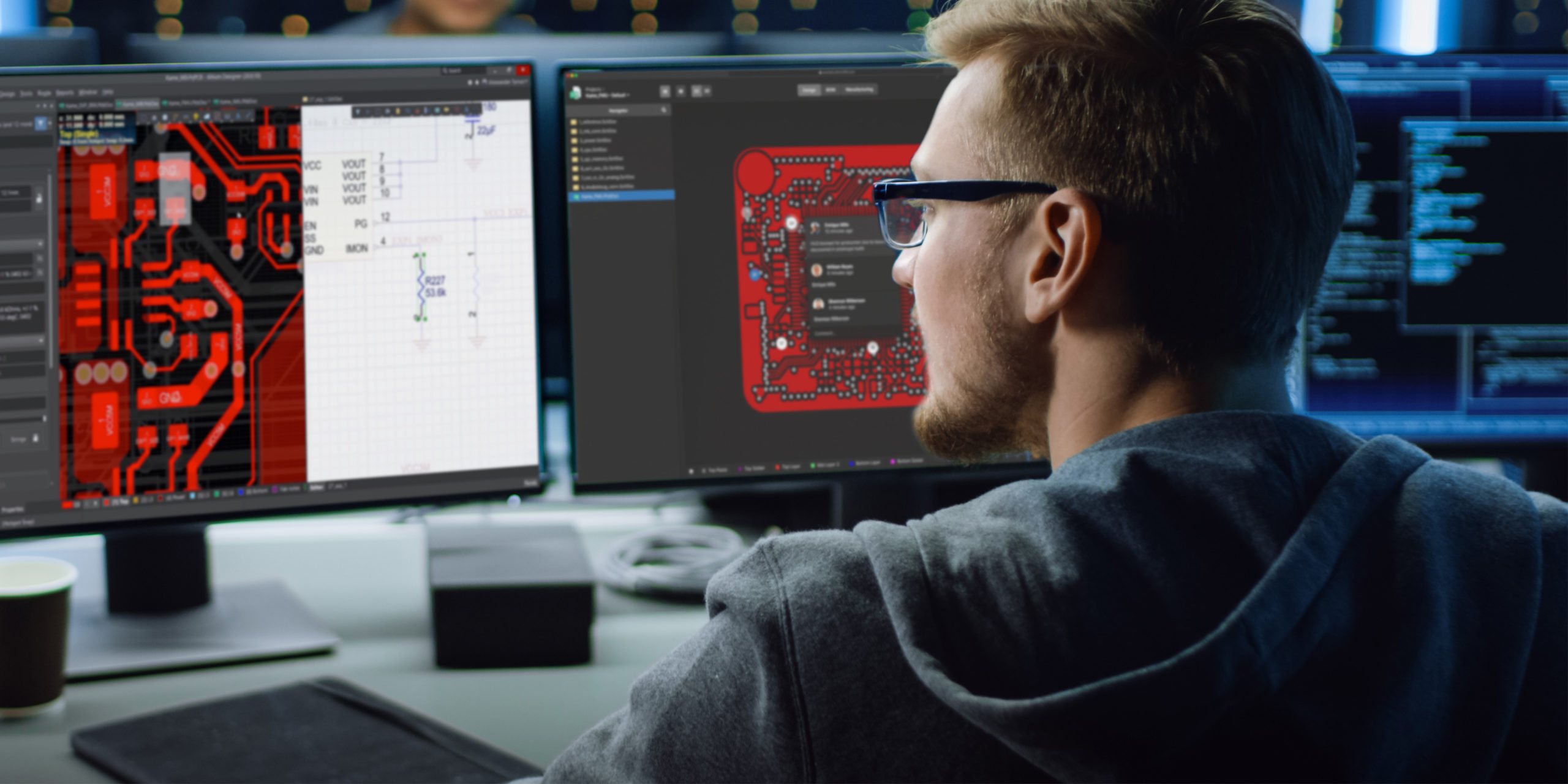The Australian software company Altium created a PCB design automation tool and software. It is currently the most popular and well-known program in the electronic design business. It includes a schematic, an auto-router, and a PCB module. It also includes pairs for differential routing. Additionally, it facilitates track length turning and 3D modeling. Altium PCB design course offers a variety of editors and software engines for electronic product development. It aids in managing processing, compiling, and editing in addition to editing. This program also offers X2 integration. Since its environment is completely adjustable, one can arrange the workspace to suit the situation.
Different types of PCB
The different types of PCBs available are
- Single-Sided PCBs.
- Double-Sided PCBs.
- Multilayer PCBs.
- Rigid PCBs.
- Flex PCBs.
- Rigid-Flex PCBs.
Basics of PCB Layout Design for Engineers
Good board design methods ensure that your design will function as intended and can be produced in large quantities, regardless of whether you are moving quickly or developing a high-speed printed circuit board. We’ve included a few of the most important PCB board design and layout principles that apply to the majority of contemporary circuit boards in this tutorial. The PCB layout rules presented here are a solid place to start for most board designs, while specialty designs may need to adhere to different board layout rules.
The following recommendations are concentrated in a few crucial areas that will assist you with routing, manufacturability, fundamental signal integrity, and assembly:
- Establishing guidelines for board design to ensure fabrication and assembly yield
- Component positioning with a focus on solvability and routing simplicity
- Assembling components according to kind to avoid having to route them everywhere
- The PCB stack-ups power and ground locations, as well as certain areas for mixed signal PCB layout designs
- Observing mechanical restrictions, such as restrictions on enclosure size and connector placement
- Attributes of Altium Designer
- Altium Designer offers the following potent features:
- Track length turning and 3D modeling
- Strong Tools for Data Management
- Real-time transparency and cost estimates are provided.
- Intelligent enough to manage supply chains
- Routing technology of the present
- Tool Reuse in Design
- Cutting-edge and rigid support for flex board designs
- Flexible Release Management Tools
Conclusion
Altium Designer supports and provides all these functionalities inside a single, unified design environment. In addition, it is designed to offer the most productivity possible.
Altium Designer’s unified functionality also allows for the easy transfer of design-related data from one design stage to the next. The learning curve can be enhanced with its many features to boost productivity.
It specifically aids scientists and engineers in keeping up with all facets of electronic design procedures. After many efforts from developers, this software now provides a unified design environment. Because of this, Altium Designer is currently a widely used tool for designing PCBs.






